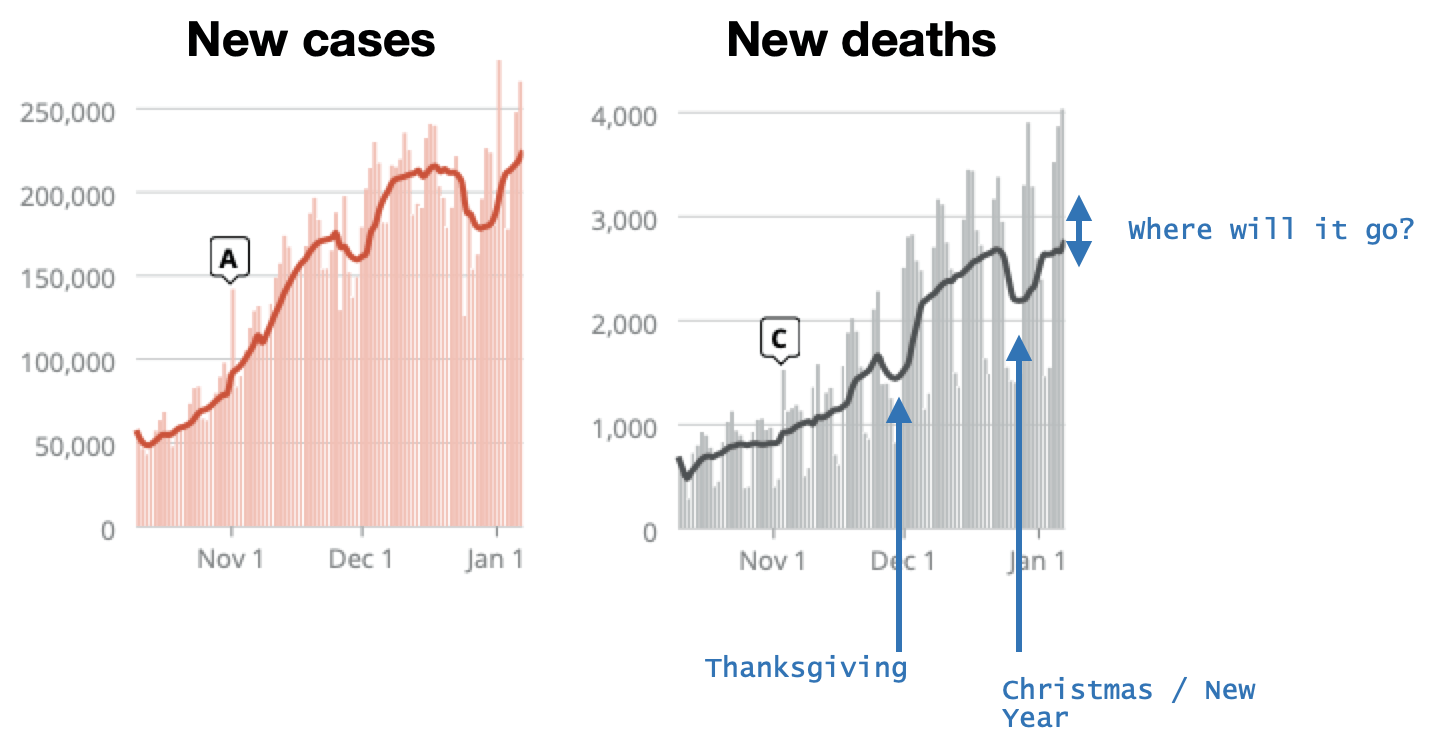
U.S. Holiday Dip
The graph on the left shows the extent by which daily incidence (red) and daily deaths (grey) dipped after the two most important holidays in the U.S.
It further shows that it is hard to predict by how much more future numbers will rise before they reflect reality.